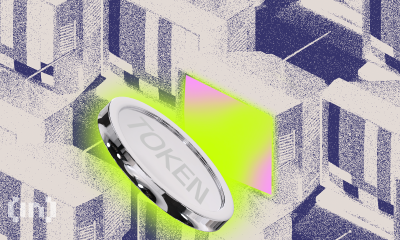Market
How Tokenization Unlocks New Opportunities

The rise of real-world asset (RWA) tokenization is reshaping traditional investment markets, unlocking new opportunities in sectors beyond finance. Though tokenization has historically focused on real estate, precious metals, and fine art, the ability to tokenize tangible luxury goods is now emerging as a transformative force in the industry.
BeInCrypto spoke with Harley Foote, CEO and Co-founder of CryptoAutos, a leading project in the RWA luxury car market, to understand what is driving this new phenomenon’s rise and its future prospects.
RWA Market Growth and Future Potential
Real-world asset tokenization has surged as one of the crypto industry’s dominant narratives in the last few years.
Tokenization leverages blockchain to create digital representations of real-world assets, allowing for fractional ownership. This approach democratizes access to expensive assets by breaking them into more affordable, divisible tokens.
Real estate, commodities, art, financial assets, and precious metals are the most commonly tokenized real-world assets. In 2024, the total market size of tokenized assets reached $186 billion, marking a 32% increase compared to the previous year, according to a report from the Tokenized Asset Coalition.
“The RWA market has exploded in the last year due to a perfect storm of macro trends, technological advancements, and shifting investor sentiment. Institutional interest in blockchain-based assets, ETFs becoming, dare we say, the norm, improved regulatory clarity in key jurisdictions, and the increasing need for liquidity in traditionally illiquid markets have all contributed to this acceleration,” Foote told BeInCrypto.
The industry’s prospects for the future remain promising. According to German consulting firm Roland Berger, the value of tokenized assets is projected to exceed $10.9 trillion by 2030, with real estate, debt, and investment funds leasing as the top three tokenized asset categories.

With RWA tokenization growing, new asset categories are emerging.
The Rise of Tokenized High-End Goods
The tokenization of luxury goods, such as supercars, yachts, jets, and high-end watches, is becoming a transformative trend that is difficult to ignore.
“Initially, RWAs were focused on tokenizing financial instruments like bonds, real estate, and commodities, which made sense. However, as the technology has matured and investors have had their eyes opened and their tastebuds tickled, we’re seeing an expansion into tangible assets with intrinsic scarcity and strong market demand, such as luxury cars, art, and collectibles. Supercars, for example, have traditionally been reserved for ultra-high-net-worth individuals, but that is now a thing of the past due to tokenization,” Foote explained.
In 2020, the crypto startup CurioInvest announced the sale of tokens representing fractional ownership of a 2015 limited-edition Ferrari F12 TDF. They offered these tokens, priced at $1 each, for a vehicle valued at over $1 million. The company also announced plans to tokenize 500 luxury cars, which they intended to store in a warehouse in Stuttgart.
In 2023, Cloud Yachts introduced a novel approach to the yachting industry by launching a tokenized experience related to superyachts.
The NFT company tokenized a 94-foot Sunseeker super yacht, aiming to offer luxury yacht cruises to individuals for a cost comparable to a night out in Miami. It sold each NFT for $500, which granted buyers one cruise around Miami on the Sunseeker 94 for a year.
Tokenized Luxury Vehicles
Earlier this month, CryptoAutos acquired a $20 million luxury car rental fleet in Dubai, featuring limited edition Lamborghini, Ferrari, Porsche, and Rolls Royce models. Customers will have the opportunity to earn USDT through the sale and rental of these vehicles.
According to Foote, luxury goods, particularly supercars, are ideal for tokenization relative to other asset classes.
“Unlike niche financial assets, luxury vehicles have universal appeal and recognition plus a liquid global market that attracts a wide variety of buyers. What sets supercars apart from other luxury assets, like fine art or jewellery, is their potential to generate yield through rentals or shared ownership models, transforming what was traditionally a static asset into a dynamic revenue-generating investment. Additionally, supercars often serve as a hedge against inflation. Much like fine wine, classic watches; supercars tend to outperform traditional-based investments during economic downturns,” he said.
Asset tokenization carves out a unique path toward greater financial inclusion by breaking down ownership into fractions.
Democratizing Luxury Asset Ownership
Luxury vehicles are called that way because only people with a disposable income in the millions can effectively give themselves the luxury to own one. Tokenization changes that.
“Traditional luxury car investments have been restricted to elite collectors with the capital to buy and maintain rare vehicles. Previously, you needed to pay for the whole vehicle but tokenization democratizes access. These new models can allow investors to own a share of high-value assets with minimal capital, trade their holdings in liquid markets rather than waiting for an entire vehicle resale and generate passive income from rental-based yields,” Foote told BeInCrypto.
Several supercars are limited editions, making them particularly well-suited for tokenization.
“The wider car market certainly is a depreciating asset, once they are mass-produced, they are sold and they rarely retain their value. But these are supercars, limited-production hypercars, and classic models. [They] are particularly well-suited for tokenization due to their inherent scarcity, exclusivity, and strong global brand appeal. Limited production runs coupled with collector demand naturally drives up value appreciation over time,” Foote added.
The growth of luxury goods in the RWA industry attracts attention from investors outside the crypto sector, potentially influencing the broader adoption of RWAs in mainstream finance.
“Luxury RWAs serve as a bridge between traditional investors and blockchain-based finance. We see the current progress towards tokenization of luxury assets, like supercars, yachts, and other items, only accelerating as mainstream adoption of RWAs takes hold,” Foote said.
These assets’ reliance on blockchain technology also inspires greater confidence among investors considering luxury goods as a way to diversify their portfolios.
Blockchain’s Role in Curbing Risks
In high-value asset trading, blockchain technology can help ensure transparency, liquidity, and security.
According to Foote, blockchain inherently eliminates many inefficiencies and risks associated with traditional asset ownership by providing transparent ownership at the source.
“Each tokenized asset is recorded on-chain, ensuring a clear ownership history which helps prevent fraud. Unlike traditional methods, investors can trade fractional shares of supercars, eliminating the need for lengthy resale processes. And due to the speed of blockchain technology you aren’t waiting for days for banks to clear your money, you can purchase your car with a few clicks,” he said.
Meanwhile, smart contracts further expedite the process and curb risks.
“Smart contracts enforce legal agreements, revenue-sharing models, and governance mechanisms, reducing the need for intermediaries. While transactions are immutable and tamper-proof, enhancing investor confidence,” Foote added.
Certain jurisdictions are creating regulatory structures to enable confident investor participation in response to the growth of luxury asset tokenization.
Regulatory Frameworks for RWA Tokenization
Different jurisdictions across the globe have implemented regulations for this emerging market, enabling investor access to tokenized RWAs.
“Regulatory frameworks vary widely. Dubai, Switzerland, and Singapore have emerged as favorable jurisdictions for asset tokenization, providing clear legal frameworks and investor protections. Meanwhile, the US and EU are still refining their RWA regulations, but we are seeing promising signs, especially within the US under the new leadership,” Foote told BeInCrypto.
In November 2024, the Monetary Authority of Singapore (MAS) introduced new measures to facilitate the commercialization of tokenized assets. These measures included forming commercial networks designed to enhance liquidity in tokenized assets.
MAS also announced plans to develop a market infrastructure ecosystem and established industry frameworks for implementing and settling tokenized assets.
Meanwhile, Switzerland remains a pioneer in the tokenization sector, supported by its comprehensive legal structure for digital assets. The country’s 2021 Swiss DLT Bill facilitated the secure and compliant tokenization of diverse asset types, drawing international participants to its market.
Even before Singapore and Switzerland, Dubai was the first jurisdiction in the world to implement regulatory clarity for tokenized assets. In 2020, it established the Virtual Assets Regulatory Authority (VARA), a regulatory entity that oversees virtual assets.
This authority focuses on regulating various virtual assets, encompassing tokenized products, cryptocurrencies, and security tokens. Establishing VARA provided regulatory clarity, creating a secure environment for businesses and investors to explore and invest in tokenized assets.
“Dubai is quickly becoming a global hub for tokenized luxury assets due to progressive regulations, strong investor demand, and a thriving crypto ecosystem. We’ve seen multiple projects like Mantra, Reelly, and of course, ourselves, make significant commitments to RWA operations in Dubai so far in 2025,” Foote said.
Yet, before investing in tokenized luxury goods, it’s important to consider their associated risks.
Risks and Future Prospects
Although some countries have established clear regulatory frameworks for virtual assets, most have not. The overall regulatory landscape concerning tokenization is still developing.
Potential regulation changes could impact tokenized assets, requiring investors to remain informed about the changing legal environment.
Meanwhile, tokenized assets, like other investments, are susceptible to market fluctuations. Although tokenization can improve liquidity, it does not mitigate the inherent volatility in asset markets, particularly real estate and commodities.
“We would never shy away from the risks involved, like in any market. Things like market volatility and general economic conditions can impact demand. As can maintenance costs, especially with classic cars, due to the requirements of careful upkeep. And there is the elephant in the room which is regulatory uncertainty. Evolving laws and regulations around tokenized assets could affect investment structures,” Foote told BeInCrypto.
Nonetheless, Foote is certain that the demand for tokenized luxury goods is there and will not disappear anytime soon.
“Investors are increasingly seeking yield-generating luxury assets that offer both utility and appreciation potential. It’s a genuine new frontier that’s opening up right in front of us, and we are taking the opportunity with both hands on that steering wheel and turning the NOS up to the max,” he concluded.
While challenges remain, the appeal of tokenized luxury goods suggests that this is a developing market to watch.
Disclaimer
Following the Trust Project guidelines, this feature article presents opinions and perspectives from industry experts or individuals. BeInCrypto is dedicated to transparent reporting, but the views expressed in this article do not necessarily reflect those of BeInCrypto or its staff. Readers should verify information independently and consult with a professional before making decisions based on this content. Please note that our Terms and Conditions, Privacy Policy, and Disclaimers have been updated.
Market
MELANIA Crashes to All-Time Low Amid Insiders Continued Sales

A wave of heavy sell-offs linked to the team behind the Melania meme coin (MELANIA) has raised fresh concerns about insider activity within the project.
These activities have contributed to the token’s value dropping to an all-time low, a staggering 97% down from its all-time high on Trump’s inauguration day back in January.
Heavy Insider Selling Sends MELANIA to Historic Low
On April 19, on-chain analyst EmberCN reported that wallets tied to the project offloaded nearly 3 million MELANIA tokens.
In return, the team received approximately 9,009 SOL, valued at around $1.2 million. The tokens were sold through unilateral liquidity provisions added to the MELANIA/SOL trading pair on Meteora.
This transaction is part of a broader pattern. In the past three days, the MELANIA team reportedly moved 7.64 million tokens, worth about $3.21 million, from both liquidity and community wallets.
The team systematically added these tokens to the same liquidity pool and sold them for SOL within a pre-defined price range. Out of the total, they sold 2.95 million tokens just hours before EmberCN’s disclosure.
“In the past 3 days, the $MELANIA project team has continued to transfer out 7.643 million $MELANIA tokens ($3.21M) from liquidity and community addresses, then added them to MELANIA/SOL one-sided liquidity on Meteora, selling $MELANIA within a set range for SOL. Of which, 2.95 million $MELANIA tokens were sold 7 hours ago for 9,009 SOL,” EmberCN stated.
EmberCN further pointed out that the project’s team has sold over 23 million MELANIA tokens in the past month. The tokens were worth approximately $14.75 million.

These repeated sell-offs have added weight to concerns over internal dumping—suspicions that first emerged in March.
At the time, blockchain analytics firm Bubblemaps reported unusual movements of over $30 million in MELANIA tokens. Originally part of the community allocation, the tokens appeared to be gradually transferred to exchanges without explanation.
The firm linked these transactions to Hayden Davis, a co-founder of the meme coin. Davis previously worked on another controversial token, LIBRA, which briefly surged after Argentine President Javier Milei endorsed it, then quickly collapsed.
Bubblemaps also revealed that wallets tied to the MELANIA team control roughly 92% of the token’s total supply. Critics argue that this level of centralization raises red flags over potential market manipulation.
As a result of these concerns, MELANIA has seen its price collapse. After reaching a high of over $13 earlier this year, the token has dropped by over 96% to an all-time low of $0.38, according to data from BeInCrypto.

However, the steep decline reflects both internal turmoil and broader weakness in the meme coin sector. Investor appetite for high-risk tokens appears to be fading amid global uncertainty and a more cautious market sentiment
Disclaimer
All the information contained on our website is published in good faith and for general information purposes only. Any action the reader takes upon the information found on our website is strictly at their own risk.
Market
Charles Schwab Plans Spot Crypto Trading Rollout in 2026


Charles Schwab, one of the largest brokerage firms in the United States, is preparing to launch a spot cryptocurrency trading platform within the next year.
This marks a major move by one of the most trusted names in traditional finance and shows that demand for crypto investment options continues to climb.
Charles Schwab Eyes Crypto Expansion
During a recent earnings call, Schwab CEO Rick Wurster said the firm is optimistic about upcoming regulatory changes that could allow it to fully enter crypto trading.
“Our expectation is that with the changing regulatory environment, we are hopeful and likely to be able to launch direct spot crypto and our goal is to do that in the next 12 months and we’re on a great path to be able to do that,” Wurster explained.
This move would allow the company to offer direct access to spot crypto trading and place it in direct competition with major players like Coinbase and Binance.
While the company already offers crypto-related products such as Bitcoin futures and crypto ETFs, the addition of direct trading would significantly expand its crypto portfolio. According to the CEO, engagement on these products has grown rapidly in recent months.
Wurster revealed that visits to the firm’s crypto-focused content have surged 400%. Of that traffic, 70% came from users who are not yet customers, showing a growing appetite for digital asset investments.
Wurster’s confidence in crypto aligns with the Trump administration’s efforts to introduce a clearer regulatory framework for digital assets. Compared to past years, progress on crypto legislation and oversight has accelerated, especially among key regulatory bodies like the SEC.
If these improvements continue, Schwab could debut its spot crypto trading platform before mid-2026. The firm believes its reputation in traditional finance gives it a strategic advantage in expanding into the crypto space.
Meanwhile, Schwab is already dipping its toes into the sector through its role as custodian for Truth.Fi, an upcoming digital investment platform launched by Trump Media and Technology Group. Truth.Fi plans to offer a mix of Bitcoin, separately managed accounts, and other crypto-linked products.
Indeed, Schwab’s potential entry into the sector has drawn attention from other industry leaders. Asset management firm Bitwise CEO Hunter Horsley described the brokerage firm’s move as a milestone in crypto’s transition to mainstream finance.
Rachael Horwitz, Chief Marketing Officer at Haun Ventures, echoed that sentiment and encouraged Schwab to consider crypto-collateralized lending as a future offering.
“Schwab should implement crypto-collateralized lending as part of its banking services next,” Horwitz said.
Disclaimer
In adherence to the Trust Project guidelines, BeInCrypto is committed to unbiased, transparent reporting. This news article aims to provide accurate, timely information. However, readers are advised to verify facts independently and consult with a professional before making any decisions based on this content. Please note that our Terms and Conditions, Privacy Policy, and Disclaimers have been updated.
Market
Today’s $1K XRP Bag May Become Tomorrow’s Jackpot, Crypto Founder Says

A long-time supporter of XRP who is not afraid to speak his mind has issued stunning predictions concerning the future value of the cryptocurrency. His assertions have both interested and confused investors.
Investor Forecasts 50-Fold Return On XRP
As per the Alpha Lions Academy founder Edoardo Farina, an investment of $1,000 in XRP today can increase to more than $50,000 in the future. The estimate is based on the altcoin crossing Farina’s desired price target of $100 per token, from its current value of around $2.
“Buying $1,000 worth right now is really buying over $50,000 in the future when $XRP hits $100+”, Farina tweeted recently.
Farina previously revealed he will not sell any of his XRP holdings until the price reaches at least $100 per token. He terms the coin as sitting at the hub of what he refers to as a “multi-generational pump” and points out its potential function within the international finance system.
XRP @ $2
Buying $1,000 worth right now is really buying over $50,000 in the future when $XRP hits $100+
50x return
— EDO FARINA 🅧 XRP (@edward_farina) April 18, 2025
Minimum Holdings Suggestion Sparks Skepticism
According to reports, Farina urges retail investors to own a minimum of 1,000 XRP tokens. He asserts that such an amount is the minimum one needs in order to take advantage of the use and greater adoption of XRP in the future.
Such opinions regarding the issue have been unequivocal. Farina has reportedly said that individuals who have fewer than 1,000 XRP tokens “don’t care enough about their financial success” and called possessing less than that amount “insanity.”
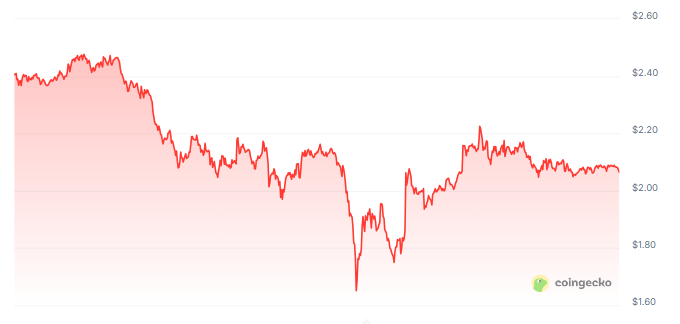
Though these comments represent Farina’s individual investment strategy, they echo a developing perception among XRP enthusiasts that the asset is undervalued and poised for strong growth if regulatory clarity increases and more businesses embrace it.
Doubters Challenge The Life-Changing Assertions
Not everyone shares Farina’s positive perspective. Doubters have raised issues with his assertion that $1,000 in XRP today may be worth $50,000 someday.
One critic pointed out that even if XRP hits $100 and converts $1,000 into $50,000, this may not be sufficient for early retirement. The remark points out that what appears to be a good return may not necessarily be the life-altering wealth many investors expect.
Questions also arise regarding if XRP will ever hit the $100 level, and if so, how long it would take to arrive there.
Price Target Timeline Indicates Long Way To Go
The journey to $100 looks long for XRP, which is currently trading at about $2. It would need a nearly 5,000% rise from where it is now to reach $100.
Featured image from Pexels, chart from TradingView
-

 Market19 hours ago
Market19 hours agoBinance Mandates KYC Re-Verification For India Users
-
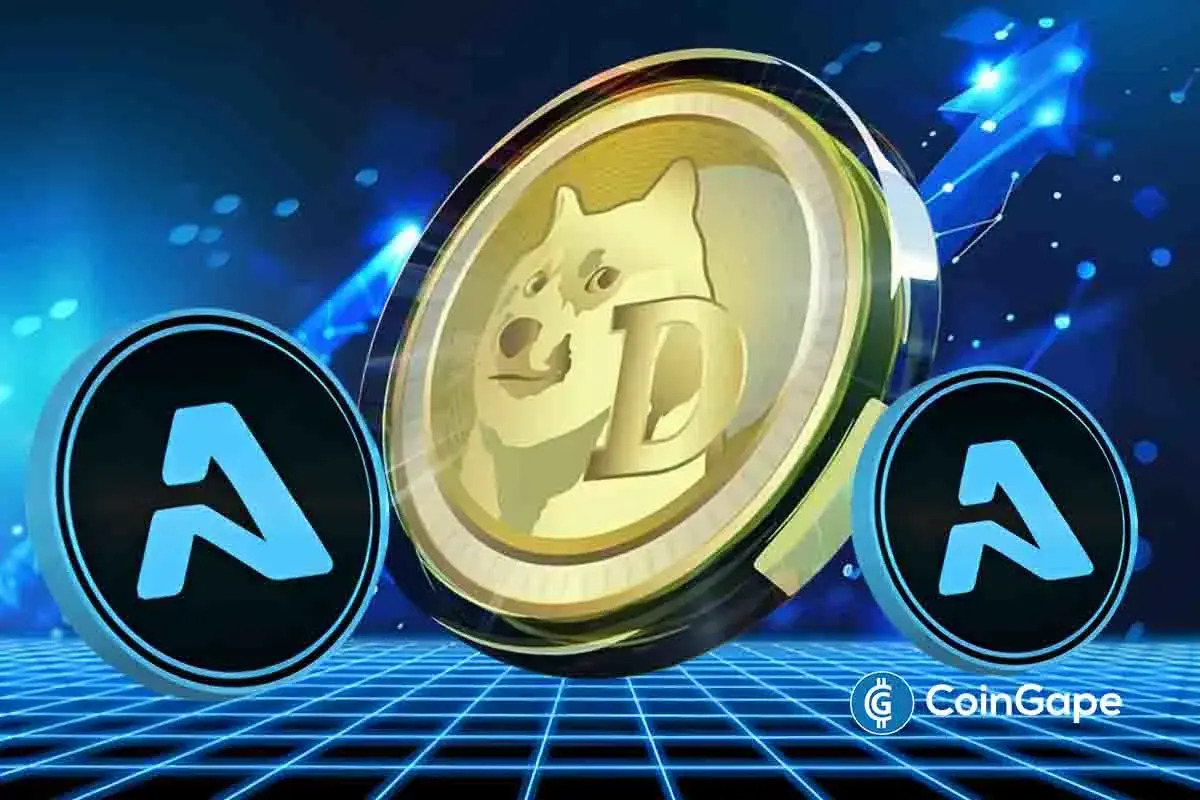
 Altcoin19 hours ago
Altcoin19 hours agoAnalyst Reveals Dogecoin Price Can Reach New ATH In 55 Days If This Happens
-

 Market23 hours ago
Market23 hours agoCardano (ADA) Moves Sideways, But Bullish Shift May Be Brewing
-
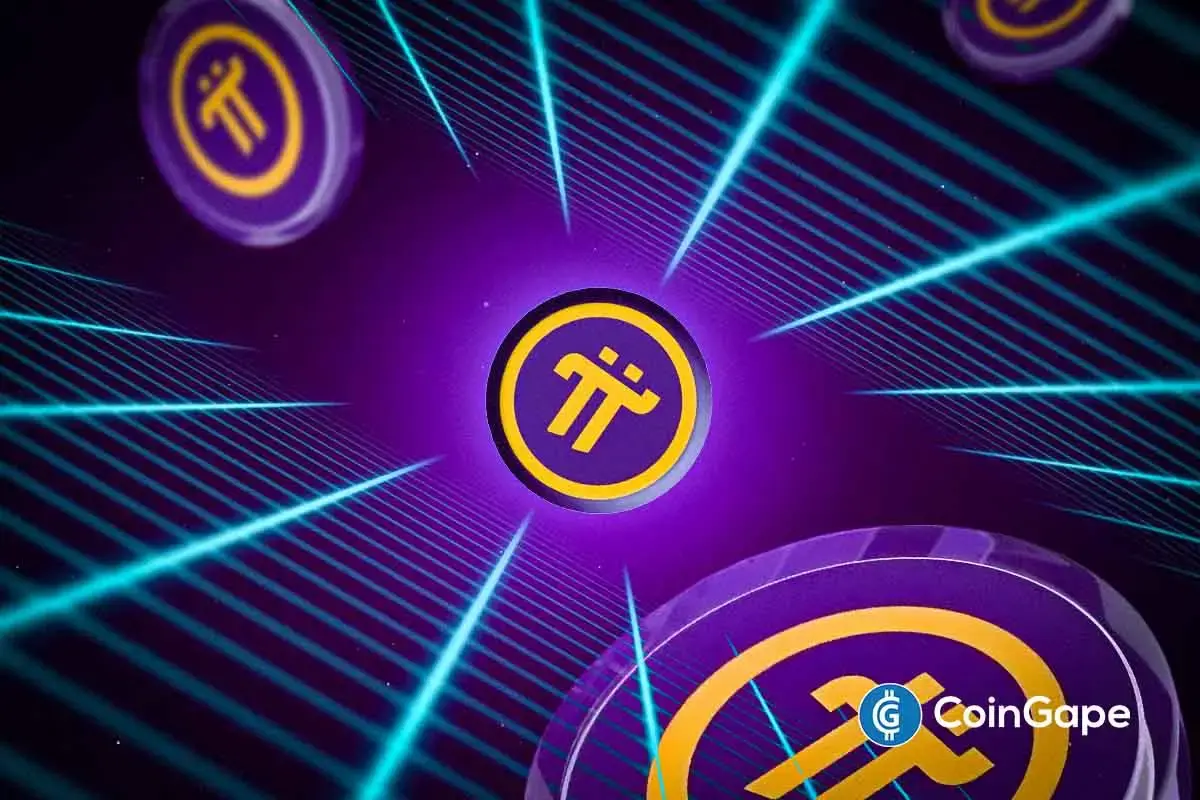
 Altcoin22 hours ago
Altcoin22 hours agoPi Coin Price Soars As Pi Network Reveals Massive Community Reward Plans.
-
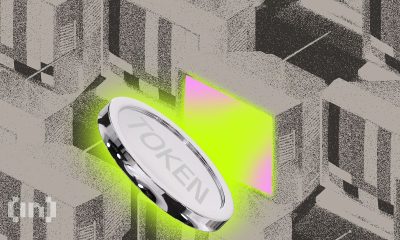
 Market21 hours ago
Market21 hours agoSCR, PLUME, ALT Tokens Unlocking This Week
-
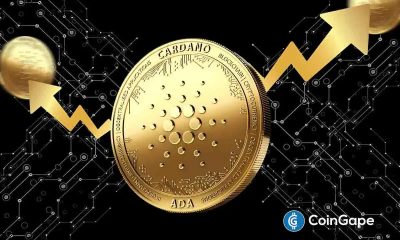
 Altcoin14 hours ago
Altcoin14 hours agoCardano Bulls Secure Most Important Signal To Drive Price Rally
-
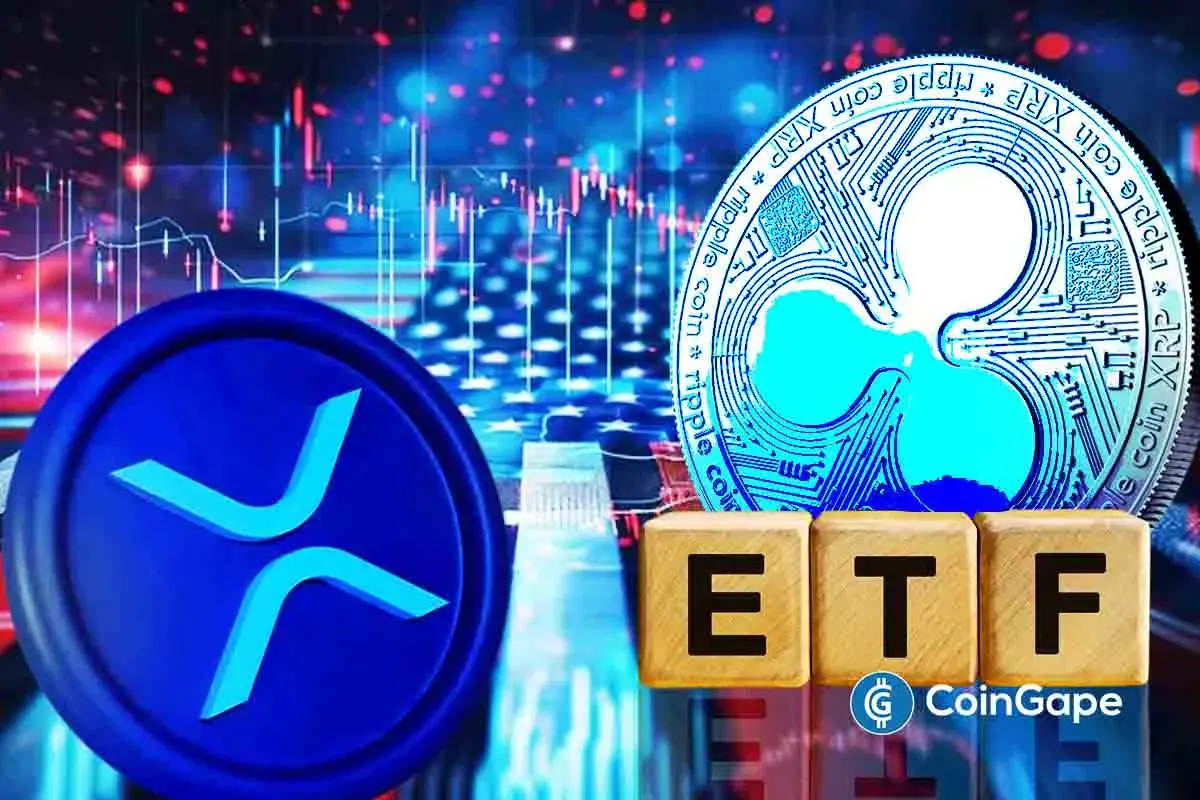
 Altcoin23 hours ago
Altcoin23 hours agoXRP ETF Approval Could Spark a ‘Perfect Storm’ for Ripple Coin: Expert
-
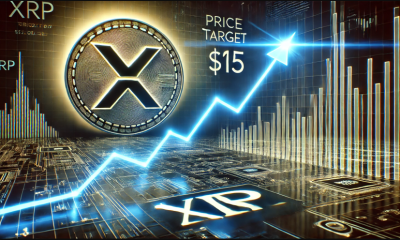
 Market22 hours ago
Market22 hours agoRipple Takes Asia By Storm With New XRP Product, Here Are The Recent Developments


